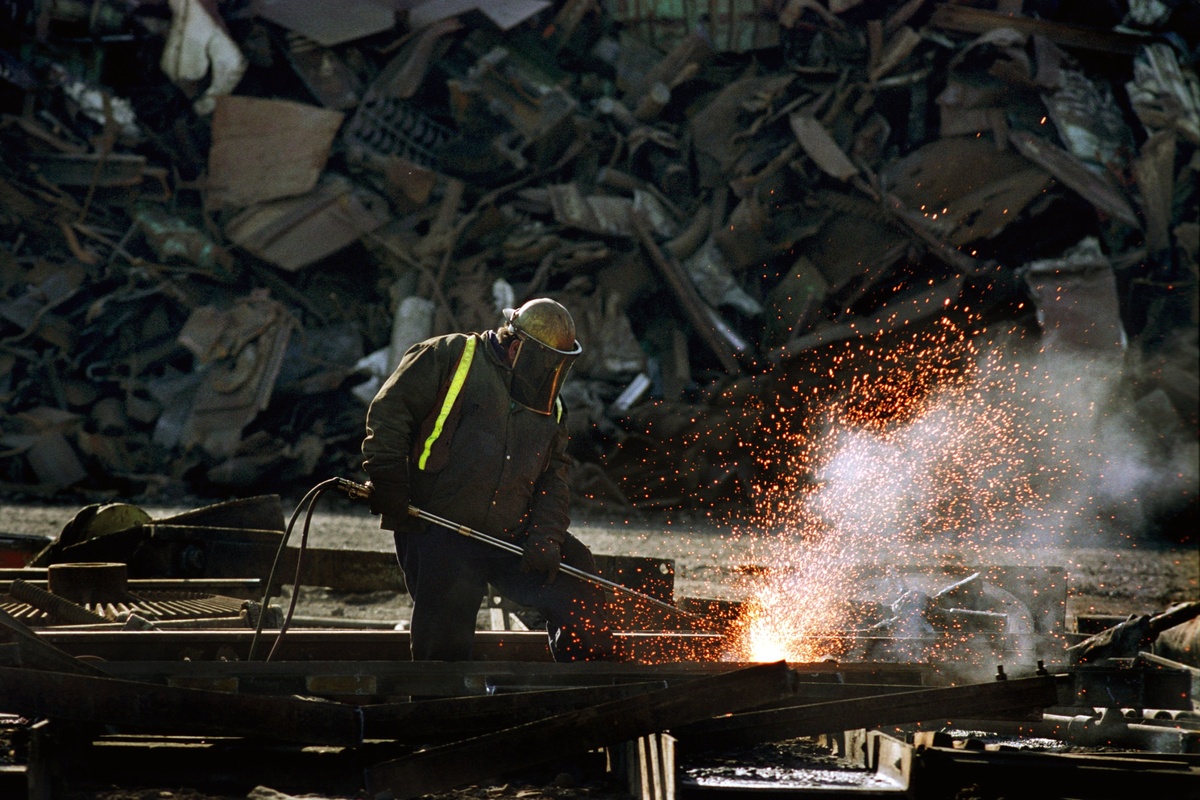Schnitzer Steel CEO Rebranding: People questioned Tamara Lundgren, “What kind of steel do you make?” when she became Schnitzer Steel’s CEO. In 1906, Russian immigrant Sam Schnitzer founded the company. One person recycled scrap metal initially. Through acquisitions and natural expansion, it has become one of North America’s major manufacturers and exporters of recycled metal products and a global leader in collecting, processing, and selling steel after 117 years.
Lundgren claimed the company makes steel. She noted that its steel had the lowest carbon emissions worldwide. She stated steel is now the company’s smallest business.
“The name Schnitzer Steel doesn’t really describe what we do anymore,” said Lundgren, who joined the company in 2005 and became CEO in 2008. “We finally got to the point where it’s probably time to rebrand if you introduce yourself by saying what you do a little bit, but not most.”
Lundgren has led the corporation into the circular economy. It recycles metals, sells used vehicle parts, and provides third-party recycling for manufacturers, industrial businesses, and retailers.
“In today’s world, recycling and recycling metals have reached a level of importance that didn’t exist 10 years ago,” said Lundgren. “As we switch to low-carbon technologies like electric cars, solar, wind, and so on, we need more metal than we did before.”
Wind turbines’ steel towers and 170-foot composite blades are recyclable, but most end up in the trash. A 2021 research predicts 2.2 million metric tons of waste by 2050. Lundgren said the company and board were considering rebranding as the market changed.
In January, Lundgren’s Davos visit climaxed. Corporate Knights, a green economy journal, called Schnitzer Steel the “Most sustainable company in the world.” Lundgren said most news articles concerning it centered on its steel industry.
Lundgren remarked, “I’m glad we got that kind of attention, but the main reason was all the recycling we did.” She quickly called her communications staff to discuss rebranding. This led to larger gatherings with specialists to brainstorm and official meetings with the board and an internal team to get input.

Read More: Archer Aviation Boeing collaboration on Self-Driving Air Taxi Technologies
Some unusual names were suggested. Lundgren said Radius Recycling stuck with everyone they mentioned it to, which brought the topic back to the beginning. She believed a name that explained what you did made the difference.
As a public company, the process was kept private, so Lundgren said some employees and stakeholders wouldn’t learn about the name change until July 26. She believed everyone would understand.
She believed ESG investors would be particularly interested. Even while this group of investors already supports the business, Lundgren said the new brand will “open up doors to people who might have put us in a category that wasn’t in their scope of interest.”
Could its ESG ties hurt its reviews? Lundgren disagrees since the company has been sustainable since before it was a word. We recycle and don’t waste.”
Lundgren said Radius Recycling will take time to implement. She stated the company has a lot of heavy equipment that will be repainted or rebranded when it rolls over. Most of the job will be done digitally, so the corporation won’t have to spend more money faster on that. Nasdaq will rename it in September.
Lundgren said she would tell other companies in the middle of a huge economic and market change that much of the process was focused on listening: how people felt about the company at first, what questions they asked, and where they thought the company was going. She remarked, “It was putting all of those pieces together and talking.” “We must communicate to make this work.”
The corporation will discuss its environmental services with other CEOs. Lundgren hopes her business name will make it easier to discuss these services with other CEOs. “We want to take a company and business from the old economy and position them so that they are essential to the success of the circular economy and this transition to a low-carbon world,” she said.
Our Reader’s Queries
Why did Schnitzer Steel rebrand?
Schnitzer Steel has recently undergone a rebranding process and is now known as Radius Recycling. This change reflects the company’s vision, purpose, and impact on the circular economy. As a leading player in the industry, Radius Recycling is committed to promoting sustainability and reducing waste. The new name is a testament to the company’s dedication to creating a better future for our planet. With this rebranding, Radius Recycling is poised to continue its leadership in the stainless steel industry and beyond.
What is the new name for Schnitzer?
Schnitzer Steel Industries, Inc. has recently rebranded itself as Radius Recycling. This new name and identity will represent the company’s commitment to sustainability and environmental responsibility. With this change, Radius Recycling aims to continue providing top-notch recycling services while also promoting a greener future for all.
Who owns Schnitzer Steel?
Contrary to popular belief, hedge funds do not own Schnitzer Steel Industries. The largest shareholder is BlackRock, Inc., with 12% of shares outstanding. The Vanguard Group, Inc. comes in second with 9.5% of common stock, and Dimensional Fund Advisors LP holds about 8.2% of the company’s stock.
How many employees does Schnitzer Steel have?
Radius Recycling, formerly known as Schnitzer Steel Industries, Inc., is a renowned steel manufacturing and scrap metal recycling company based in Portland, Oregon. With a rich history dating back to 1906, this publicly traded company is a proud member of the Russell 2000 Index and boasts a workforce of around 3,500 skilled professionals.

